Great Chishill's 'unique' trestle mill undergoes £110k restoration
- Published
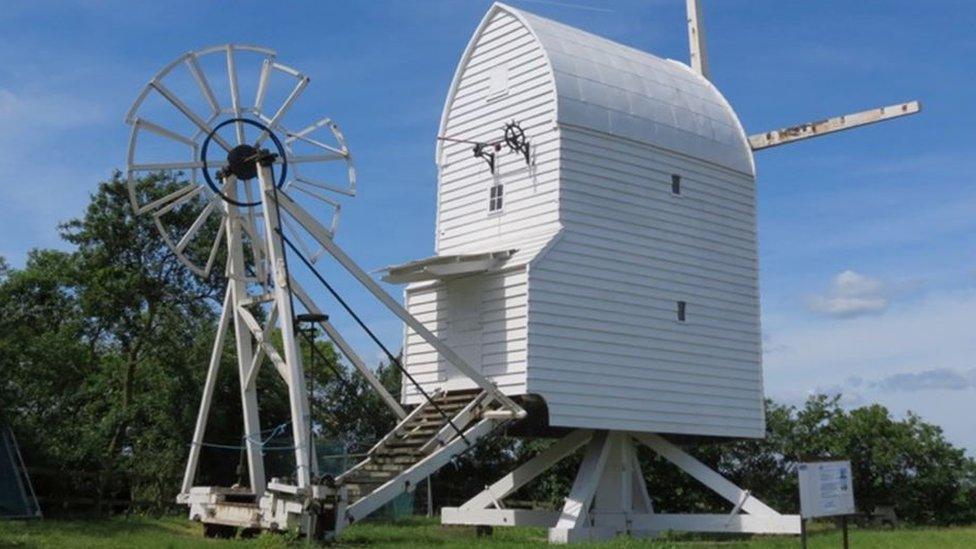
It is a trestle mill, built around a main central post supported underneath by a cross brace of wooden beams
A "unique" 200-year-old mill which had fallen into disrepair has completed a £110,000 restoration.
The Grade II* listed mill is one of seven left in the country and the only one with a fantail, the Great Chishill Windmill Trust said.
The restoration was paid for by grants and the Cambridgeshire villagers, who organised music nights, craft fairs and a "sponsor a board" appeal.
The trust's David McKeown said: "Seeing it look wonderful makes us all proud."
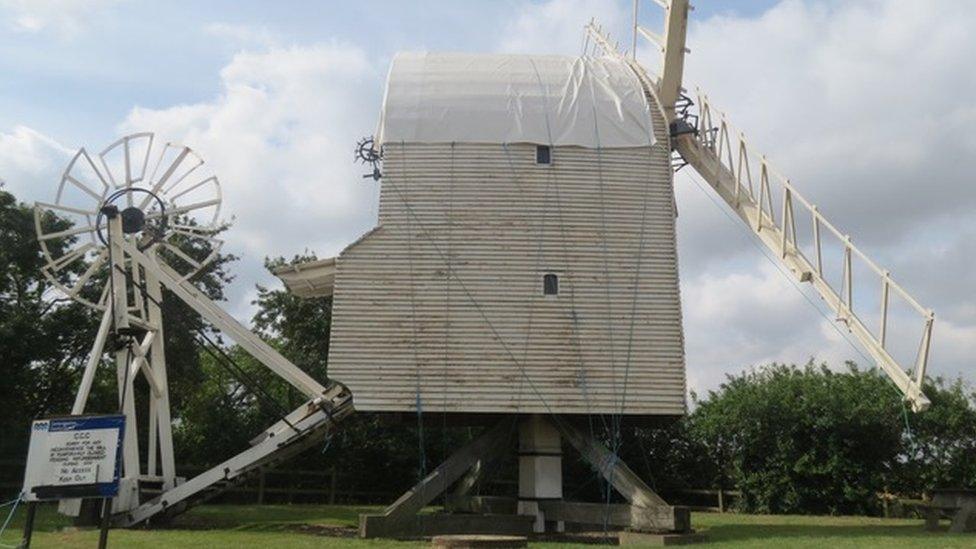
The dilapidated building needed its sails restoring, new cedar weatherboard cladding and structural repairs
Mr McKeown said it is "this shining white edifice welcoming you to the village".
"And it's unique as it's the only open trestle windmill in the country with a fantail," he added.
The mill was built in 1819 and remained in use until 1951, grinding animal feed.
In 1964, Cambridgeshire County Council bought it and opened it to the public.
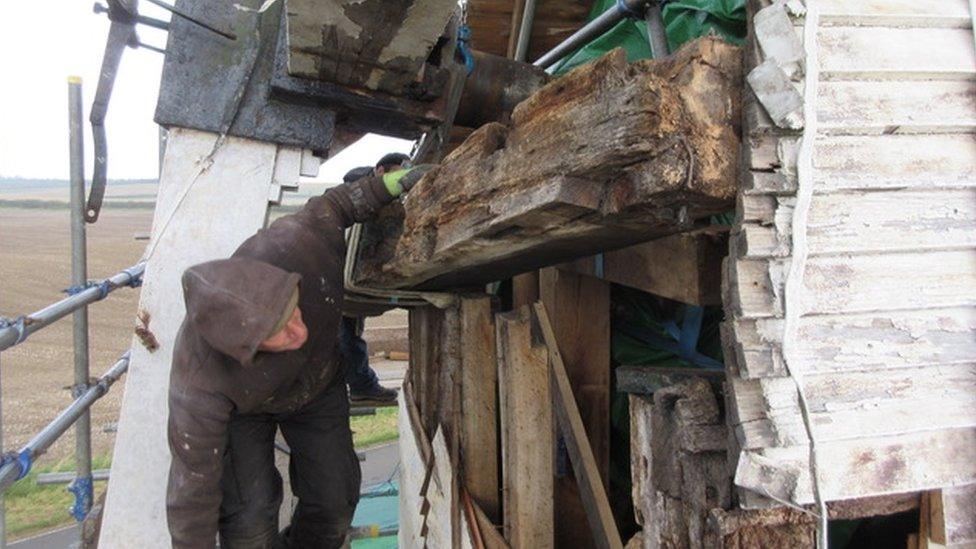
Millwright Bill Griffiths guiding the rotten weather beam during its removal for repair
But by 2011, it had "fallen into a sad state of disrepair", Mr McKeown said.
Villagers Jim Brearley and Jeff Gill formed the trust to save the mill, leasing it from the council for 125 years in 2012.
Mr McKeown said: "Weatherboards were leaking and the trestle timbers had large splits in them - but before work could begin listed building consent was needed."
Work finally began in 2017, when it became apparent structural timbers were in a far worse state than expected and new weatherboards were required.
The village raised £18,500 through its sponsor a board appeal and Historic England increased its grant from £15,000 to £77,000, while the Society for the Protection of Ancient Buildings gave £29,000.
With the exterior saved, the trust now hopes to raise more money to restore its internal equipment.
- Published25 October 2017
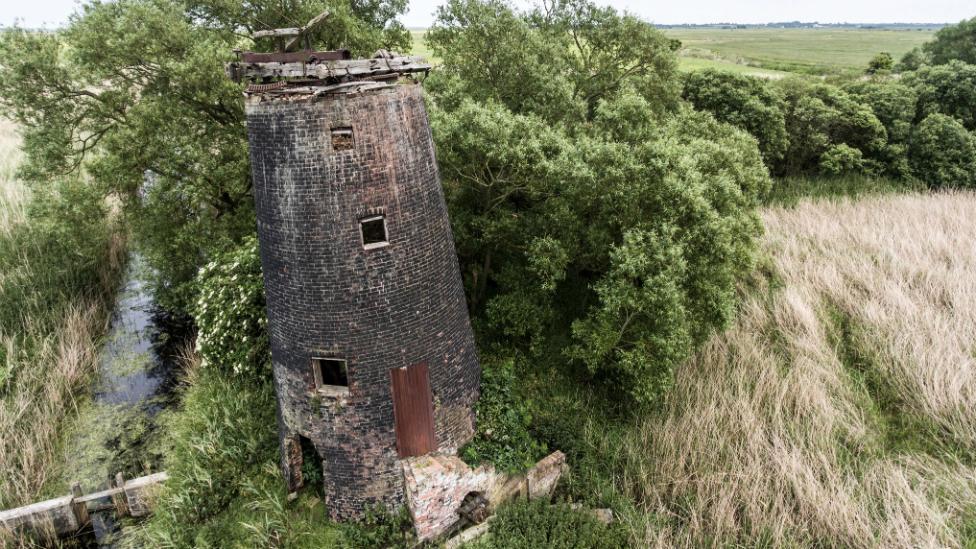
- Published12 April 2014
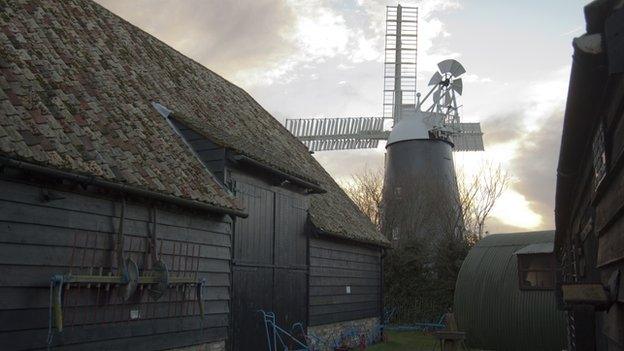
- Published29 February 2012
